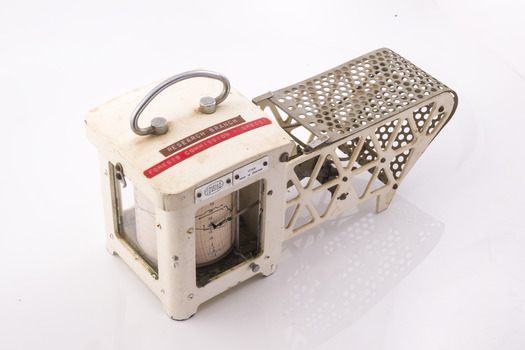Historical information
Bushfire behaviour is influenced by many factors including temperature, relative humidity (RH), forest type, fuel quantity and fuel dryness, topography and even slope. Wind has a dominant effect on the Rate of Spread (ROS), as well as fire size, shape and direction.
Temperature and relative humidity have major impacts on fuel dryness and therefore upon the availability of fuel for combustion.
A thermo-hygrograph measures and records both temperature and humidity.
It produces a continuous record by drawing ink traces on a paper chart held in revolving cylinder.
Humidity is measured by shortening or lengthening of a bundle of specially treated human hair. Temperature is measured by means of a laminated bi-metal strip of temperature-sensitive metals which bend differentially with temperature change.
The recording drum is driven by clockwork which may be geared for rotation intervals of daily, weekly or monthly periods. This particular instrument is a seven-day recorder.
Serial number 10186 which probably dates from about 1960.
The chart indicates it was last used in March 1979.
Significance
Used for bushfire research.
Physical description
Clockwork Thermo-hygrograph
Inscriptions & markings
Casella London 10186
Made in England
Research Branch. Forests Commission Orbost








